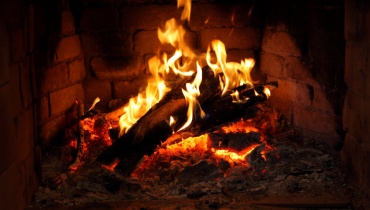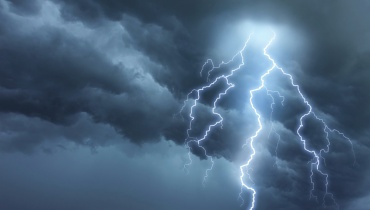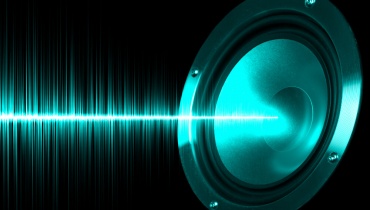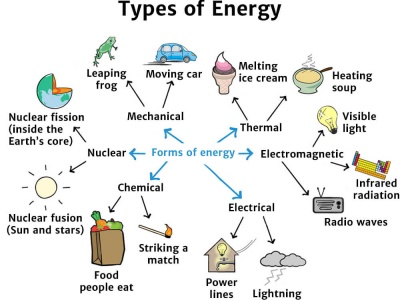Types of Energy
It's All Around Us!
In a Flash

Light is a form of radiant energy.
Burning Questions
What are the different types of energy?
Types of energy can be categorised into two broad categories – kinetic energy (the energy of moving objects) and potential energy (energy that is stored). These are the two basic forms of energy. The different types of energy include thermal energy, radiant energy, chemical energy, nuclear energy, electrical energy, motion energy, sound energy, elastic energy and gravitational energy.
Discover the different types of energy

Thermal (Heat) Energy
Thermal energy is created from the vibration of atoms and molecules within substances. The faster they move, the more energy they possess and the hotter they become. Thermal energy is also called heat energy.
Let's go! >
Chemical Energy
Chemical energy is stored in the bonds of atoms and molecules – it is the energy that holds these particles together. Stored chemical energy is found in food, biomass, petroleum, and natural gas.
Let's go! >
Nuclear Energy
Nuclear energy is stored in the nucleus of atoms. This energy is released when the nuclei are combined (fusion) or split apart (fission). Nuclear power plants split the nuclei of uranium atoms to produce electricity.
Let's go! >
Electrical Energy
Electrical energy is the movement of electrons (the tiny particles that makeup atoms, along with protons and neutrons). Electrons that move through a wire are called electricity. Lightning is another example of electrical energy.
Let's go! >
Radiant Energy
Also known as light energy or electromagnetic energy, radiant energy is a type of kinetic energy that travels in waves. Examples include the energy from the sun, x-rays, and radio waves.
Let's go! >
Light Energy
Light energy is a form of electromagnetic radiation. Light consists of photons, which are produced when an object's atoms heat up. Light travels in waves and is the only form of energy visible to the human eye.
Let's go! >
Motion Energy
Motion energy – or mechanical energy – is the energy stored in objects; as objects move faster, more energy is stored. Examples of motion energy include wind, a flowing river, a moving car, or a person running.
Let's go! >
Sound Energy
Sound energy is the movement of energy through substances. It moves in waves and is produced when a force makes an object or substance vibrate. There is usually much less energy in sound than in other forms of energy.
Let's go! >
Elastic Energy
Elastic energy is a form of potential energy that is stored in an elastic object - such as a coiled spring or a stretched elastic band. Elastic objects store elastic energy when a force causes them to be stretched or squashed.
Let's go! >
Gravitational Energy
Gravitational energy is a form of potential energy. It is an energy associated with gravity or gravitational force – in other words, the energy held by an object when it is in a high position compared to a lower position.
Let's go! >What is the Law of Conservation of Energy?
While it might sound complex, the First Law of Conservation of energy simply states that energy can never be created or destroyed, but it can be transformed from one type to another.
What Do You Mean?

Energy can be transformed from one form to another in different ways.
Kinetic energy is the energy of a moving object.
Potential energy is energy that is stored in an object or substance.
The Law of Conservation of energy is that energy can be transformed from one form to another, but can be neither created or destroyed.
Energy Transformations see diagram…
Notice that these energy transfer examples only show the useful energy transfers. However, car engines are also noisy (sound energy) and hot (thermal energy) and electric lamps also give out heat energy.
Speedy Summary
Teacher's Toolkit
Take this to the classroom!
Curriculum ready content.
